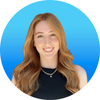Discover the world of QR code display ideas in this blog post! We've explored creative ways you can use QR codes to connect with your audience, whether you're a business owner, marketer, or tech-savvy individual.
Exciting uses, effective placement strategies, and unique presentation ideas for QR codes - we'll cover it all here to help you improve your engagement and visibility. Let's get started to transform your interactive communication.
Top 11 QR Code Display Ideas
Embarking on a journey to integrate QR codes into your business or personal projects is an exciting venture.
The versatility of QR codes allows for a plethora of creative display ideas that can significantly enhance user engagement and provide valuable information in a snap.
Let's explore some top QR code display ideas that can inspire your next big move.
1. Use QR Codes as Stickers and Labels

One of the simplest yet most effective ways to use QR codes is by turning them into stickers and labels. This approach offers unparalleled flexibility, allowing you to place your QR codes on virtually any surface or product. Here's how you can make the most out of QR code stickers and labels:
- Product Packaging: Enhance your product packaging by adding QR code stickers that lead to instructional videos, user manuals, or even promotional content. This not only adds value to your product but also creates an interactive experience for your customers.
- Branding: Use QR code labels on your branded merchandise to connect customers directly to your website or social media pages. It's a great way to boost online engagement and build a stronger community around your brand.
2. Include QR Codes on Table Tents and Tabletop Inserts
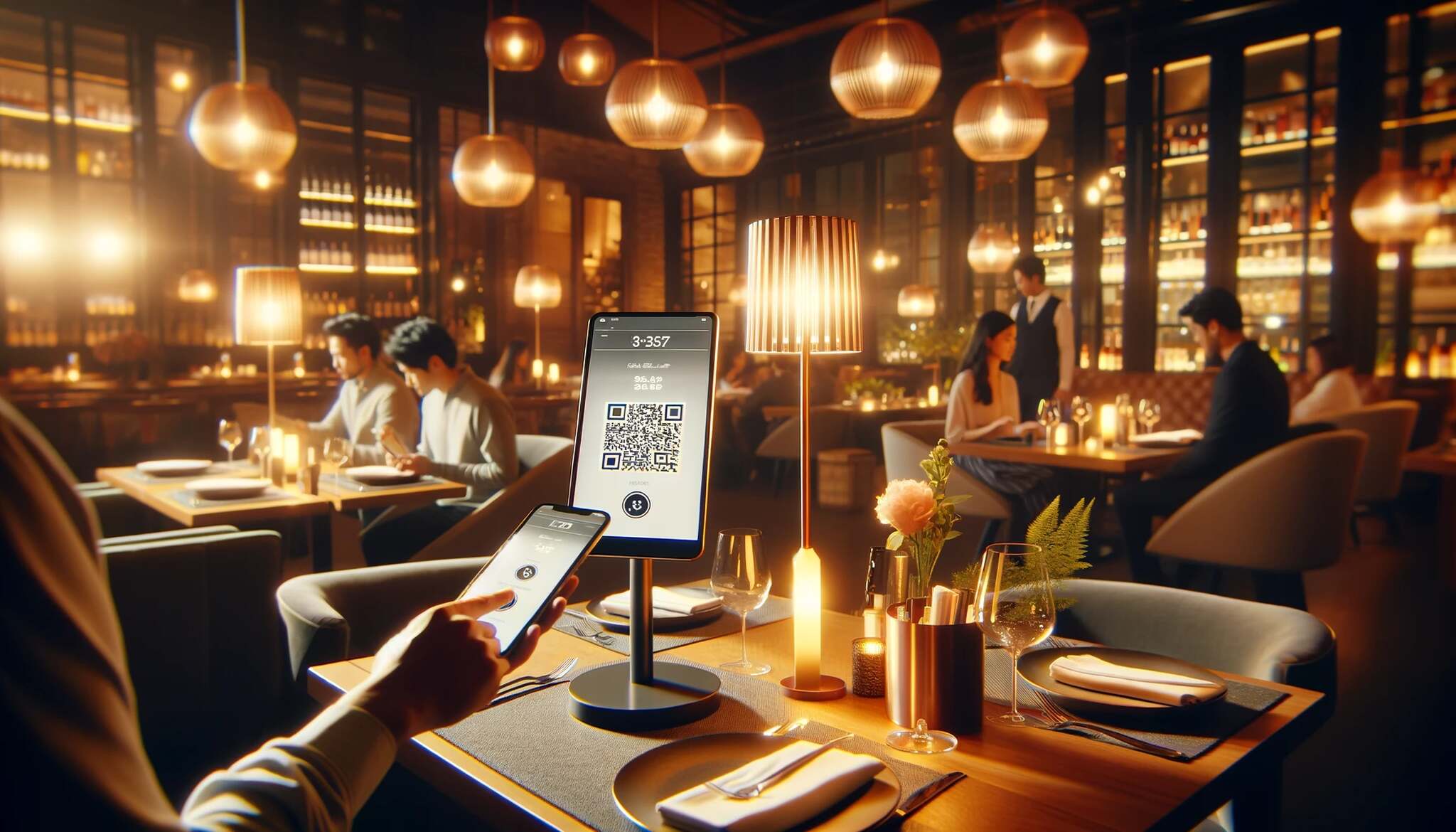
For businesses with physical locations, especially in the hospitality industry, QR codes on table tents and tabletop inserts can transform the customer experience.
Consider these ideas:
- Digital Menus: Say goodbye to traditional paper menus and hello to dynamic, digital menus accessible via a QR code. This not only reduces the need for physical contact but also allows you to update your offerings in real time, keeping your menu fresh and exciting.
- Feedback and Surveys: Encourage customers to provide feedback by scanning a QR code that leads to a survey. This direct line of communication can yield valuable insights and show your customers that their opinions matter.
3. QR Codes on Business Cards
In an era where networking is blending with digital technology, QR codes on business cards are a game-changer.
They can provide a direct link to your professional portfolio, LinkedIn profile, or personal website, making it easier for new contacts to connect with you and learn more about your work. Here are a few tips:
- Keep It Simple: Ensure the design of your business card is not overwhelmed by the QR code. A clean, simple design with a strategically placed QR code can make a strong impression.
- Value Proposition: Next to your QR code, include a short, enticing reason for someone to scan it. Whether it's to download your vCard, view an exclusive piece of content, or access a special offer, make it compelling.
4. QR Codes on Billboards
Taking QR codes to a larger scale, billboards can serve as an excellent medium for displaying them. This is particularly effective in high-traffic areas where visibility is guaranteed. Here's how to leverage QR codes on billboards:
- Location-Based Promotions: Use QR codes on billboards to offer special promotions or discounts to people in specific locations. This not only drives engagement but also encourages people to visit your store or website.
- Interactive Campaigns: Launch an interactive campaign where scanning the QR code leads to an immersive experience, such as a game or an augmented reality (AR) experience. This can significantly increase the memorability of your campaign.
5. Displaying QR Codes on Digital Channels
Digital channels provide a broad platform for QR code integration, offering various touchpoints to engage with your audience. Here's how you can leverage these channels:
- Social Media: Utilize your social media platforms by posting QR codes that lead to exclusive content, promotions, or events. This not only drives engagement but also adds a layer of exclusivity to your social media presence.
- Instagram and Facebook Stories: Perfect for time-limited offers or flash promotions. The temporary nature of stories makes them an ideal place to share QR codes, encouraging immediate action.
- Twitter and LinkedIn Posts: Ideal for sharing QR codes linked to longer-form content like whitepapers, case studies, or registration pages for webinars and events.
- Email Marketing: Incorporate QR codes into your email newsletters or promotional emails to provide a direct link to your latest content, special offers, or online store. This can significantly increase conversion rates by simplifying the user journey from email to action.
- Personalized Offers: Tailor QR codes to match the recipient's interests or past behavior, making your emails more relevant and increasing the likelihood of engagement.
- Event Invitations: Include a QR code in event invitation emails, giving recipients an easy way to register or learn more about the event.
6. QR Codes for Contactless Restaurant Menus
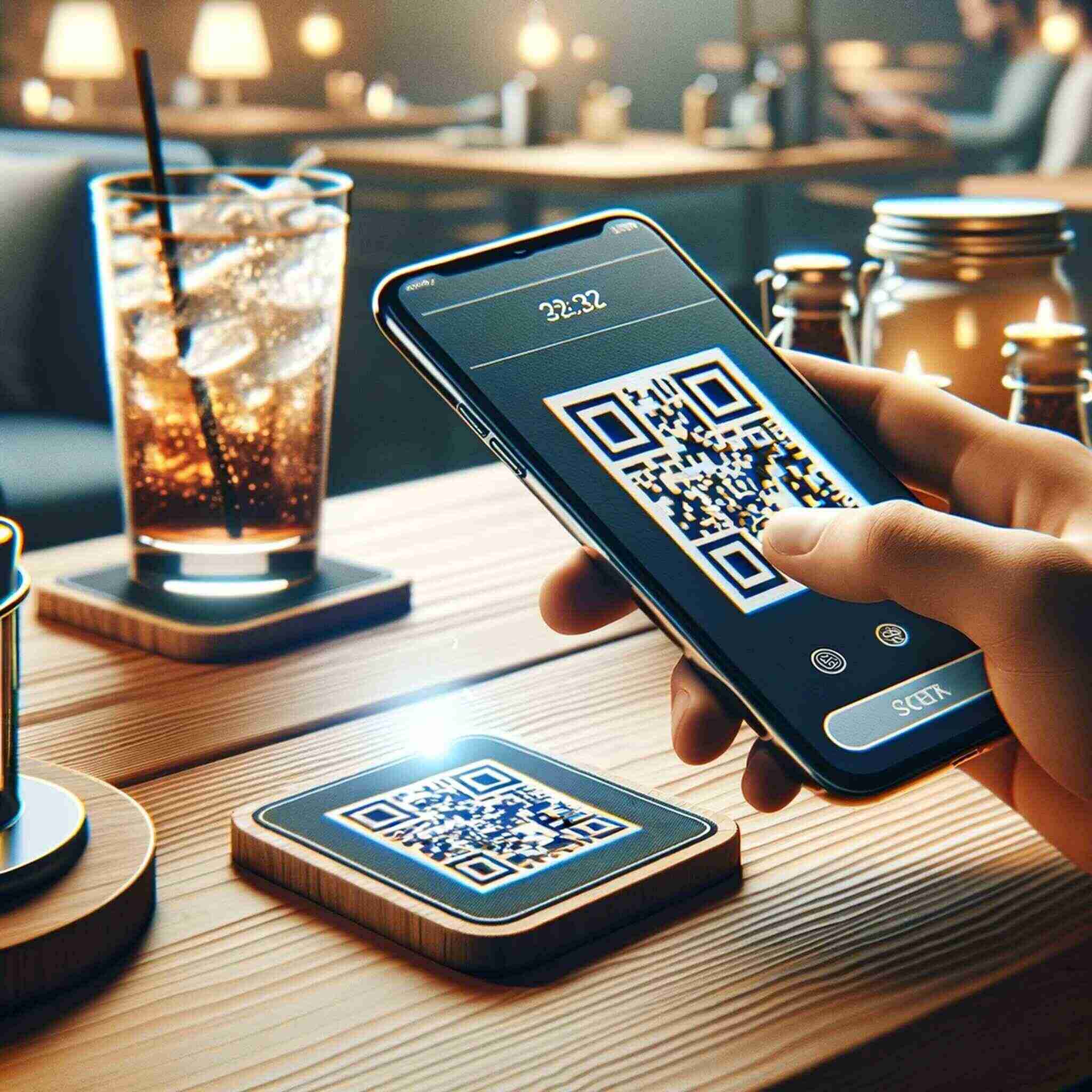
In a post-pandemic world, contactless solutions have become more than just a convenience—they're a necessity. QR codes offer a perfect solution for restaurants looking to provide a safe dining experience:
- Dynamic Menus: Replace traditional paper menus with QR codes that link to your online menu. This reduces physical contact and allows you to update your menu items and prices in real-time without having to reprint menus.
- Ordering and Payment: Take it a step further by integrating your ordering and payment system. Customers can scan the QR code, place their order, and pay, all from their own devices, minimizing contact and wait times.
7. Embed QR codes in Websites and Blogs
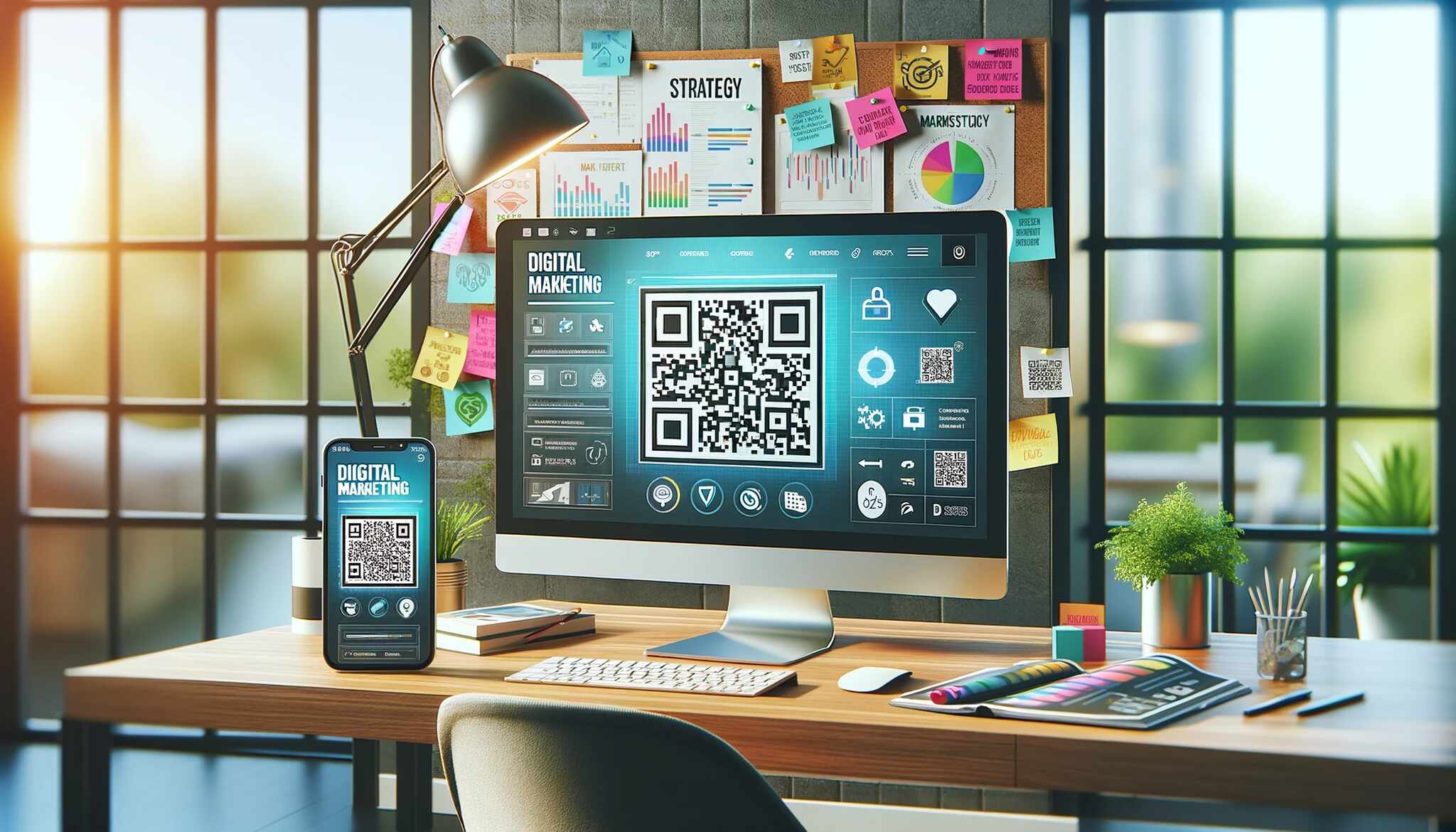
Your website and blog are prime real estate for QR code displays, serving as a central hub for your online presence. Here's how to make the most of these platforms:
- Homepage and Landing Pages: Embed QR codes that lead to specific campaigns, product pages, or sign-up forms. This can be an effective way to guide visitors toward your conversion goals.
- Interactive Guides and Tutorials: Enhance instructional content on your website by linking to interactive guides or video tutorials through QR codes, enriching the user experience.
- Customer Testimonials: Add a QR code next to customer testimonials that link to case studies or video interviews, providing deeper insights into customer experiences.
- Blog Posts: Enhance your blog content by including QR codes that link to related resources, extended content, or exclusive downloads. This adds value to your posts and encourages readers to engage further with your brand.
- Supplementary Information: Use QR codes to link to supplementary information or resources that provide additional value to your readers without cluttering your blog post with external links.
- Content Upgrades: Offer content upgrades like eBooks, whitepapers, or checklists relevant to the blog topic through QR codes, effectively turning your blog into a lead generation tool.
8. QR Code Event Wristbands
Equip event wristbands with QR codes for conferences, concerts, or festivals. Attendees can scan their wristband to access event maps, schedules, or even load prepaid credits for cashless transactions within the event, enhancing convenience and security.
9. QR Code Interactive Posters
Develop interactive posters for concerts, festivals, or community events that include QR codes. Scanning the QR code could lead to a playlist of the artist's music, event schedules, or ticket purchasing options, adding a digital dimension to traditional event promotion.
10. QR Codes in Trade Show Booths
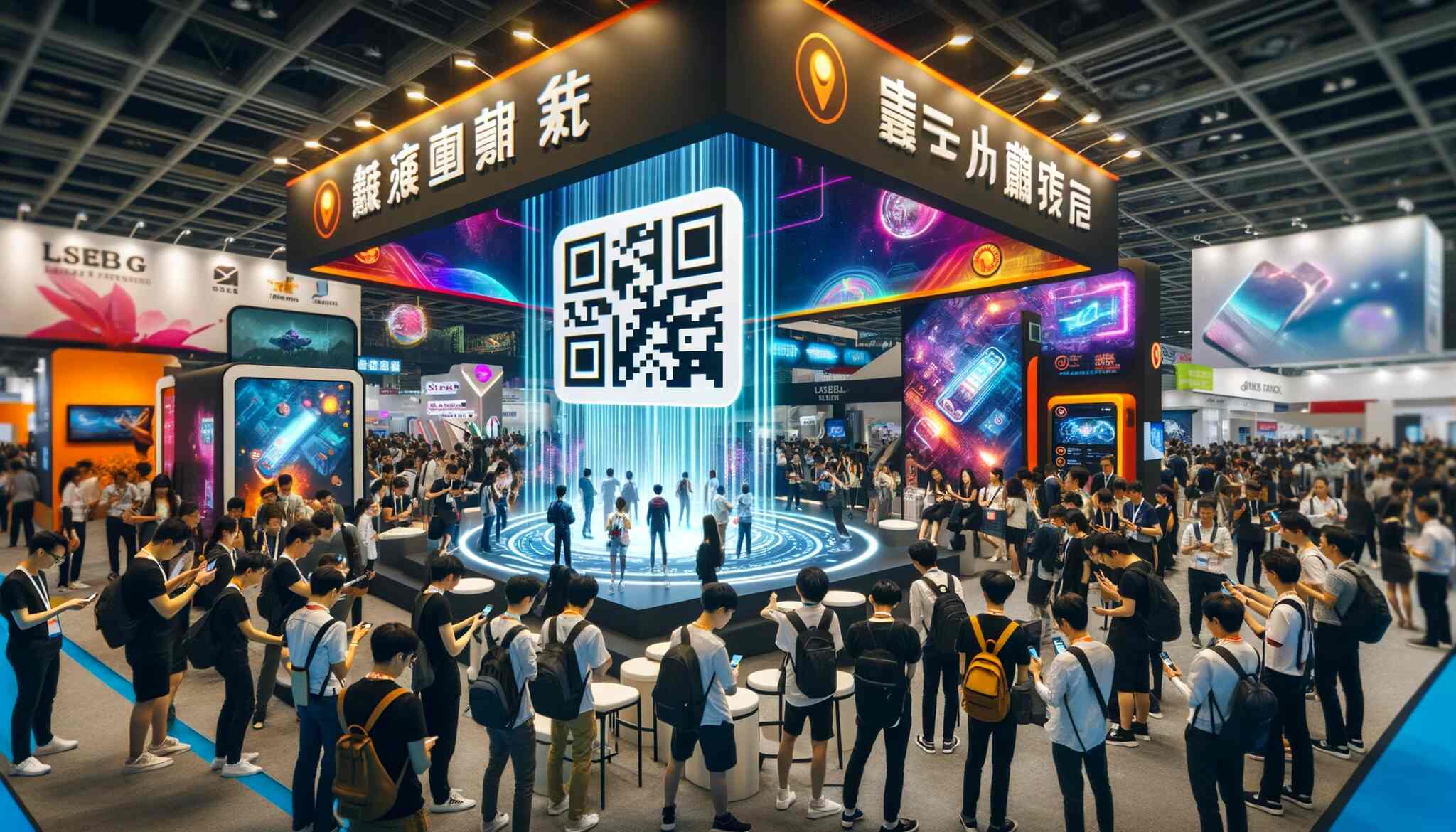
Trade shows are a fantastic opportunity for businesses to showcase their products, services, and brands to a targeted audience. Incorporating QR codes into your trade show booth design can engage visitors in unique ways:
- Interactive Displays: Create interactive displays where visitors can use QR codes to learn more about specific products, watch demonstration videos, or even experience augmented reality (AR) features related to your offerings.
- Lead Capture: Use QR codes as a quick and easy way for booth visitors to sign up for more information, enter contests, or schedule follow-up appointments. This simplifies the lead capture process and provides a seamless experience for attendees.
11. QR Codes in Train Stations, Bus Stops & Subway Stations
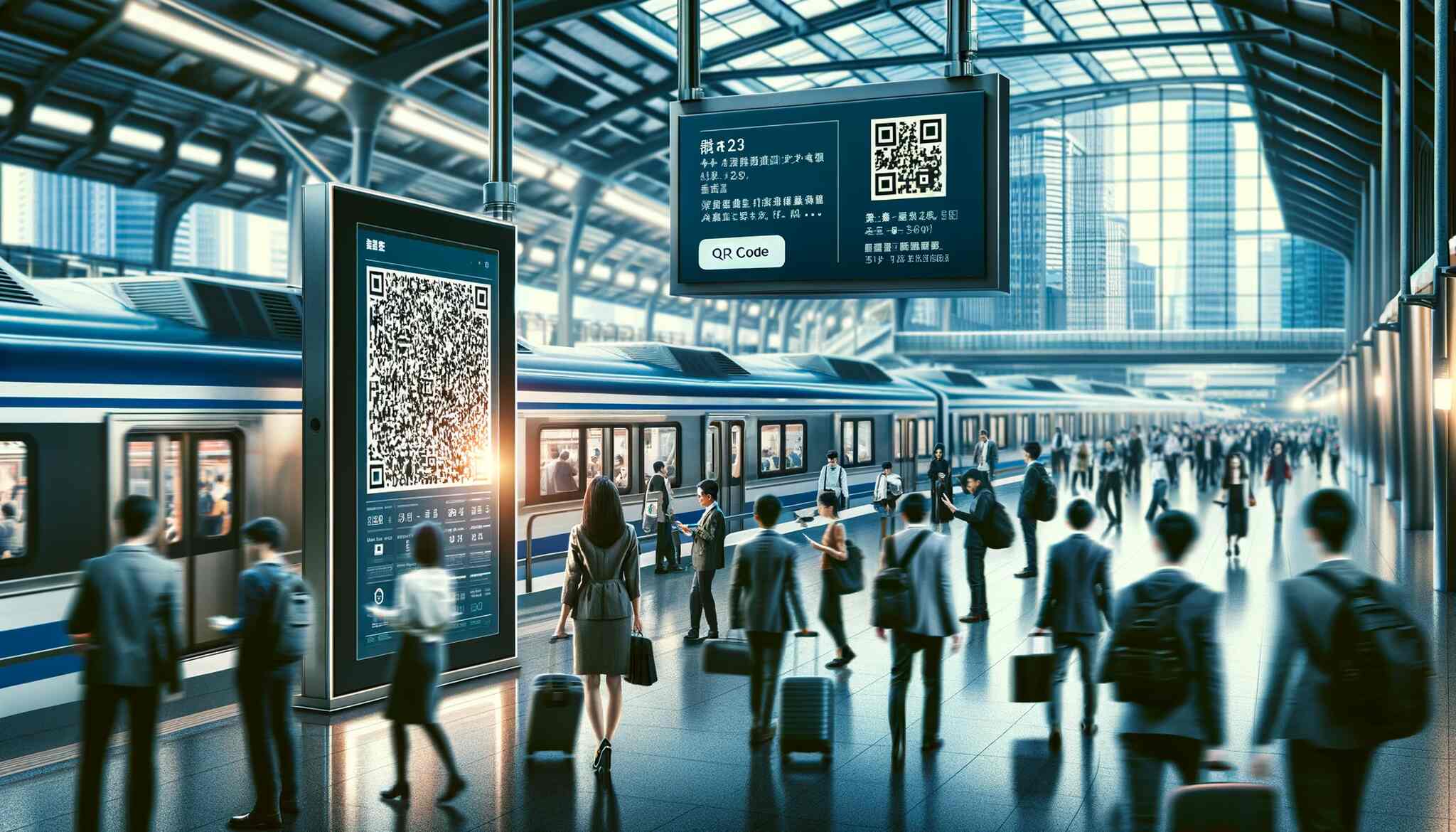
Public transit spaces offer high foot traffic and diverse audiences, making them prime locations for creative QR code displays:
- Timetables and Routes: Offer real-time access to timetables, route changes, and service updates through QR codes, making it easier for commuters to plan their journeys.
- Public Art and History: Turn transit spaces into cultural experiences by linking QR codes to information about public art installations, historical facts about the area, or stories behind the design and architecture of the station.
Best Practices for Displaying QR Codes
QR codes have become a ubiquitous tool for connecting the physical world with the digital one, offering a quick and easy way for people to access information, websites, and other digital resources. However, the effectiveness of a QR code is not just in its creation but in its display and how users interact with it.
Let's explore some best practices to ensure your QR codes are seen, engaging, and useful to your audience.
Ensure Your QR Code Displays are Visible

Visibility is paramount when it comes to QR code deployment. A QR code that cannot be easily seen or scanned is as good as non-existent. Here are some tips to ensure your QR codes stand out:
- Contrast and Size: Ensure your QR code has high contrast against its background, making it easy to distinguish. The size should be appropriate for the expected scanning distance; the general rule is 1 inch (2.54 cm) in size for every 10 feet (3 meters) of viewing distance.
- Placement: Position QR codes where they are easily accessible and within the line of sight of your target audience. Avoid placing them too high, too low, or in areas where objects or people might obscure them.
- Environment: Consider the environment where the QR code will be displayed. Outdoor QR codes may require protection from the elements and possibly larger sizes due to greater viewing distances.
Provide Clear Instructions and a Compelling CTA
A QR code without context or instruction can often lead to missed opportunities for engagement. Here's how to guide your audience:
- Simple Instructions: Even though many people are familiar with QR codes, it's always helpful to include simple scanning instructions, especially for audiences who might be less tech-savvy.
- Compelling Call to Action (CTA): Tell people exactly what they'll get by scanning the QR code. Whether it's exclusive content, a special discount, or more information, make the offer clear and enticing.
Regularly Update Linked Content to Keep It Relevant
The content your QR code links to is just as important as the QR code itself. Keeping this content fresh and engaging is key to maintaining interest and providing value to your audience:
- Dynamic QR Codes: Use dynamic QR codes (which allow you to change the linked URL without changing the QR code itself) to keep your content updated without reprinting or redistributing new QR codes.
- Relevance: Ensure the content is relevant to the context in which the QR code is displayed. For example, a QR code in a restaurant should link to menu-related content, while one at a trade show might link to product information or a sign-up page.
- Engagement: Regularly refresh the content linked to your QR code to keep it engaging. This could mean updating offers, adding new information, or linking to new videos or interactive experiences.
By following these best practices, you can maximize the effectiveness of your QR codes and ensure they provide real value to your audience. QR codes offer a unique opportunity to bridge the gap between physical and digital experiences, but their success relies heavily on thoughtful implementation and ongoing management.
With the right approach, QR codes can become a powerful tool in your marketing arsenal, enhancing customer engagement and driving desired actions.
Wrap Up
As we wrap up our journey through the world of QR code display ideas, it's clear that the potential of QR codes extends far beyond simple web links.
From enhancing customer engagement and streamlining business operations to adding a creative touch to personal projects, QR codes offer a versatile and accessible tool for connecting the digital and physical realms.
We hope this guide has inspired you to explore how QR codes can be integrated into your strategies and projects, unlocking new opportunities for interaction and innovation. Embrace the possibilities, and let your imagination lead the way to new and exciting QR code applications.
Explore our latest blog posts:

